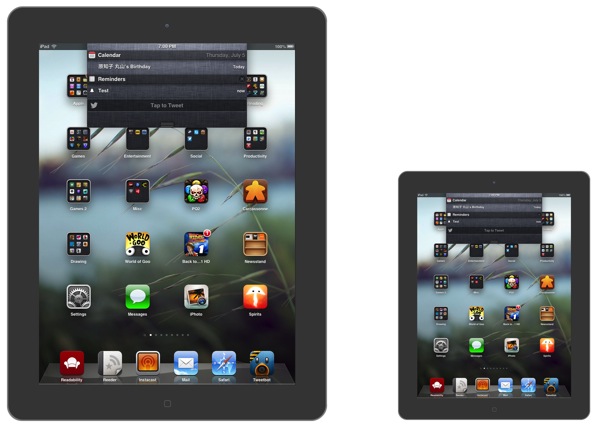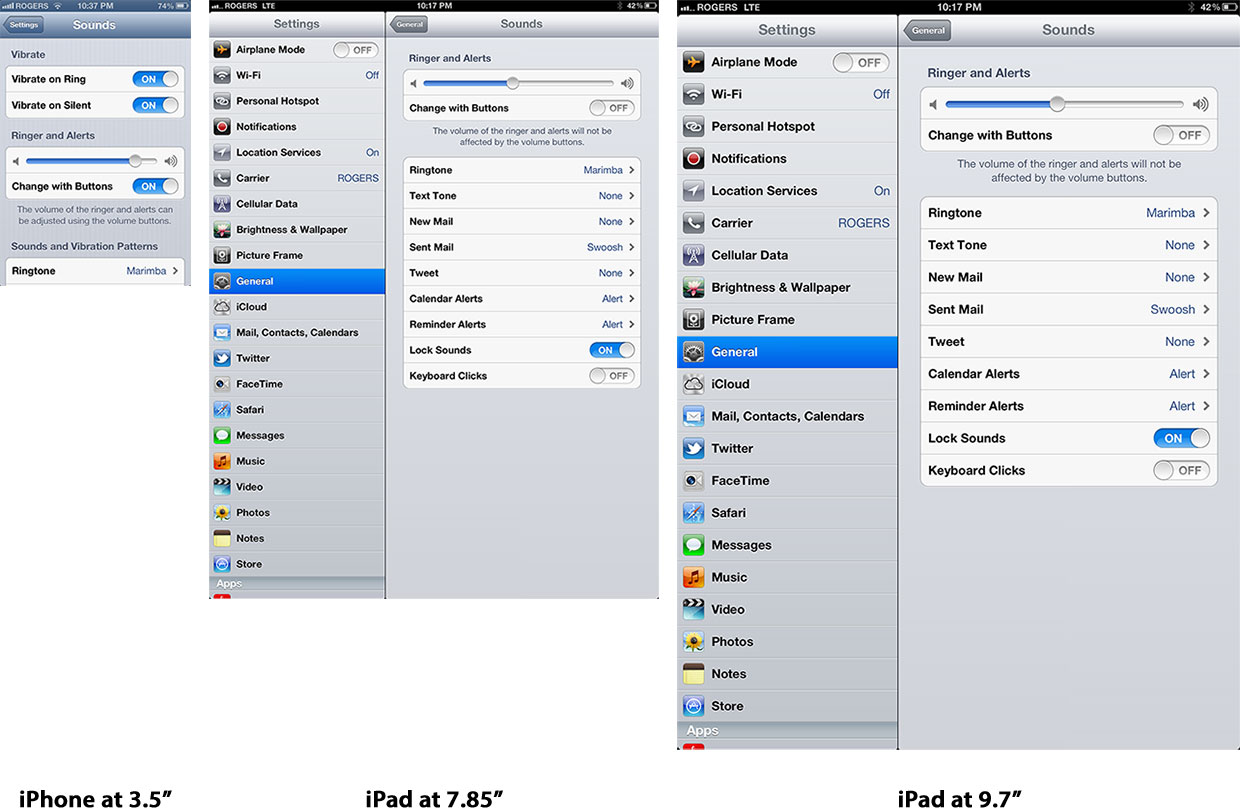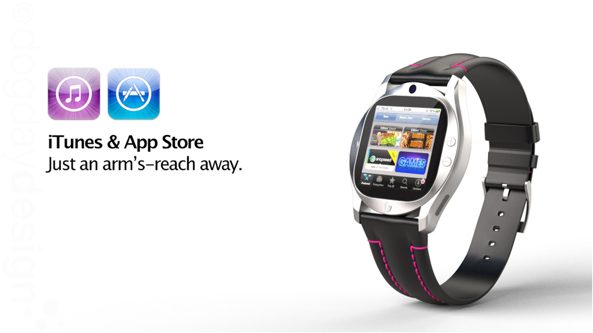I know the sandpaper joke is getting boring at this point, but bear with me for a second. Though Jobs famously dissed seven inchers as being too small to comfortably operate “unless you include sandpaper so users can sand their fingers down to a quarter of their size”, many watchers and journalists have been overanalyzing the repercussions of Apple’s rumored inexpensive 7.85-inch iPad, allegedly slated for a September launch.
I’m also guilty for this, having recently explained why I thought Apple must deliver the iPad mini sooner than later (hint: it’s the ecosystem, stupid). So let’s assume for the argument’s sake that the iPad mini is coming soon, rocking a 1024-by-768 pixels packed on a screen between seven and eight inches diagonally.
How would the new form factor affect developers, end-users and usability?
There will soon be two tablet markets: The existing (iPad) market comprised of high-end nine and above inches devices such as the iPad or Microsoft’s upcoming Surface tablet, and the low-end tweener slates dominated by the likes of Amazon’s Kindle Fire and Google’s Nexus 7, both having a display measuring seven inches diagonally. Mike Elgan goes as far to predict that small tablets will dominate the tablet market.
Should Apple do something about tweener tablets, the company will face a huge dilemma: put the burden on developers by demanding they adapt existing apps to a new form factor or do the heavy lifting by scaling the iPad’s interface down to a 7.8-inch display.
The question is, wouldn’t user interface elements in the case of the latter got too small to comfortably hit with your finger? According to developer Joel Bernstein, shrinking the iPad’s screen to 7.85 inches would kinda equalize the iPad and the iPhone that have pixel densities of 132 and 163DPI, respectively.
Apple concluded in research that 44 points is the minimum size requirement for touch targets. That said, the company could now modify the DPI without affecting usability substantially:
A 44 point target on a 7.85″ iPad would be the same size as a 44 point target on the iPhone (0.27″). Millions of people use the iPhone every day, and have little trouble tapping a 0.27″ target. As Apple has pointed out, their fingers do not change size when they move to their iPad.
Not all apps adhere to Apple’s guidelines so messing with DPI would probably affect rare programs that have UI elements smaller than 44 points, those that require extreme precision and apps that need UI elements to be a specific physical size (such as ruler apps).
So far so good.
Not everyone is with Bernstein, of course.
For example, Gabe Glick of MacStories warns that a seven-inch iPad would be half the iPad’s 9.7-inch canvas, thus making it really tough to hit the controls if apps were presented pixel-for-pixel from their 1024-by-768 pixel version. The publication created the above mockup to illustrate just how smallish the iPad mini would be next to its bigger brother.
iMore editor Rene Ritchie explains in a lengthy piece how Apple could implement the iPad mini interface. One of his suggestions:Instead of scaling the iPad iOS interface down from 9.7- to fit 7.x-inches, Apple could theoretically scale up the iPhone iOS interface from 3.5- to 7.x-inches.
The idea is best conveyed using iMore’s mockup, included above.
On a somewhat related note, Apple pundit John Gruber speculated that the iPad mini could use the same display as the iPhone 3GS, only at 1024-by-768 pixels, because Apple’s been producing this display tech at scale ever since the original iPhone five years ago.
Ritchie also heard from his Apple contacts that iOS 6 as it’s running on the current iPad would simply run, scaled down, on the 7.x-inch iPad.
Pixel density would be around the same as the original 3.5-inch iPhone, 163 ppi. (Or 326, the same as the iPhone 4 and iPhone 4S, if and when it goes Retina.) Quite the coincidence, as noted by Daring Fireball’s John Gruber.
Regardless of whether it chooses to scale down the iPad’s user interface, introduce a new resolution or do a combination of both, Apple appears to be working on tools to let programmers write resolution-independent apps that would much better adapt to whatever form factor is at hand than today’s software.
These tools already exist on the Mac and they’ll likely make their way onto the iOS platform. And with whispers of not only a smaller iPad, but also a taller iPhone and possibly a brand new five-inch iOS device and other form factors (a full-blown television set, an iWatch-like wearable device and so forth), it’s increasingly becoming apparent that iOS developers will get a whole bunch of new resolutions to work with.
And knowing Apple, they aren’t going to shoot themselves in the foot by requiring its army of developers to support new devices without giving them the tools to make developing for multiple form factors nearly painless.
Otherwise, Apple risks derailing its ecosystem with platform fragmentation issues that are now plaguing Android.
If you have suggestions as to what Apple should do to avoid this, please join the discussion down in the comments.


